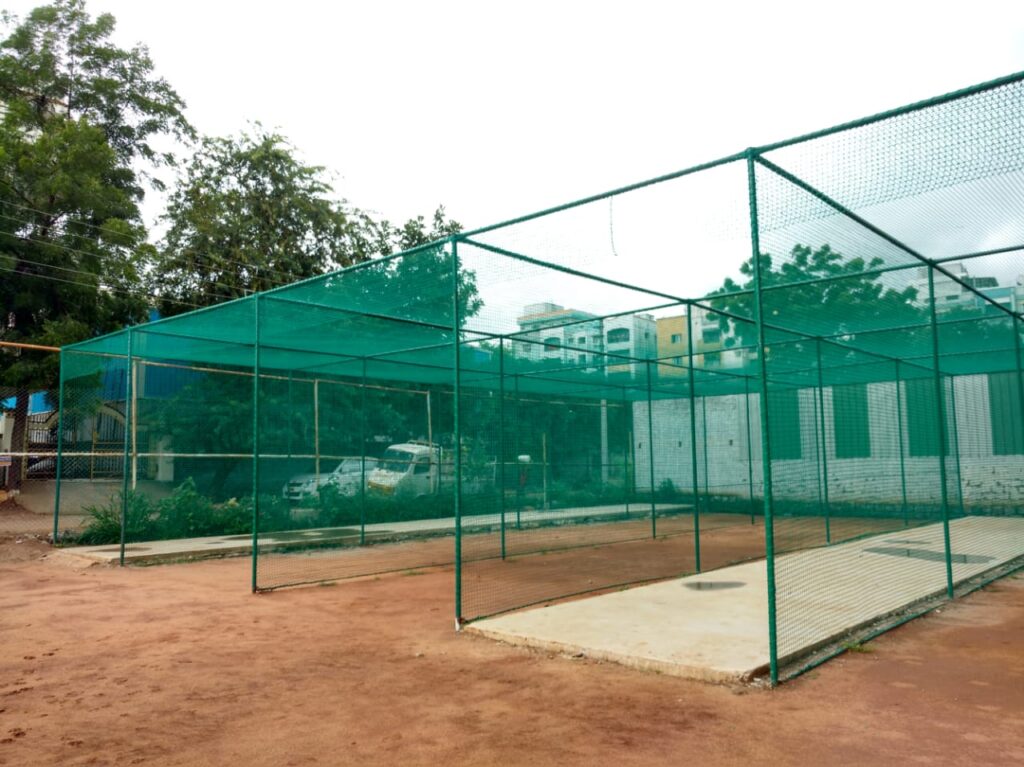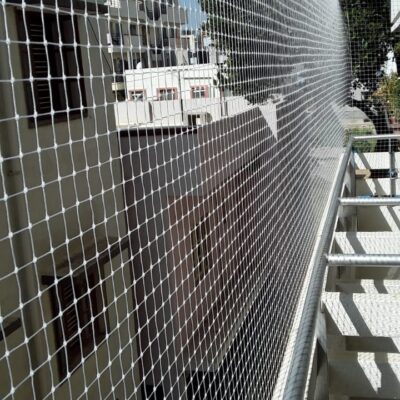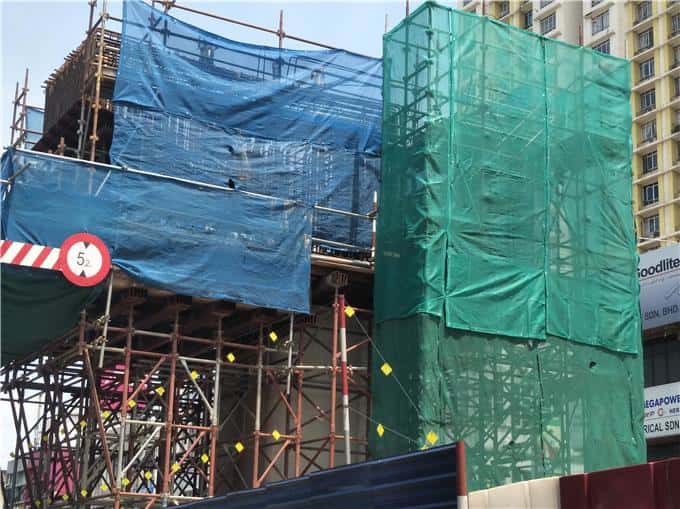Table of Contents
Introduction
Accidents are unpredictable, but being prepared makes all the difference. Fall protection nets are unsung heroes that prevent serious injuries and save lives, whether on a construction site, at a sports event, or even at home. These sturdy mesh structures act as a protective shield, catching people or objects before they hit the ground. In this article, we’ll dive into how safety nets work, why they’re so effective, and share real-life examples of how they’ve saved countless lives.
What Exactly Are Safety Nets?
Think of nets as a giant security blanket, designed to catch and protect anything (or anyone) falling from above. They are typically made of tough, flexible mesh material and strategically placed to cover risky areas, like construction sites or high-rise buildings.
- Purpose: To prevent falls and reduce the impact of accidents.
- A Bit of History: Fall protection nets have been around for a while. During the construction of the Golden Gate Bridge in the 1930s, safety nets saved 19 workers from falling to their deaths—a groundbreaking move at the time.
Types of Safety Nets You Should Know
✅ 1. Industrial Nets

These are the heavy-duty nets you’ll see at construction sites or factories. They’re designed to catch falling workers, tools, or debris, protecting both employees and bystanders.
🏀 2. Sports Nets

Ever wondered how stadiums prevent stray balls from hitting the crowd? That’s where sports safety nets come in. They’re also used in gyms, acrobatics, and extreme sports to cushion falls.
🏠 3. Residential Nets

You’ll find these in apartments and homes, covering balconies, terraces, and even windows. They are particularly popular for childproofing or keeping pets safe.
🔥 4. Fall Arrest Nets
These nets are specifically designed for high-risk environments. Used in construction and rescue operations, they catch falling individuals and minimize the impact, reducing the chance of serious injury.

How Fall protection Nets Prevent Accidents
You might be wondering: how does a simple net stop serious accidents? It’s all about cushioning the fall and absorbing impact. Here’s how it works:
- Catching Falls: Whether it’s a person, tool, or debris, the net catches the falling object, preventing it from hitting the ground.
- Reducing Impact: The flexible mesh and border ropes stretch slightly, distributing the force and softening the blow.
- Protecting Others: Safety nets also shield people below from falling objects, reducing the risk of injuries.
The Science and Proof Behind Safety webbing
Don’t just take our word for it—there’s solid proof that nets save lives.
- According to OSHA (Occupational Safety and Health Administration), construction sites with safety nets see a 40% reduction in fatalities.
- A study published in the Journal of Occupational Safety found that proper use of safety nets cuts fall-related injuries by 60%.
- Real-life cases from high-rise projects reveal that Rescue nets significantly reduce deaths and severe injuries.
The Benefits of Using Safety Nets
So, why are Safety webbing such a big deal?
- ✅ Life-saving protection: The most obvious benefit is that they prevent serious injuries and fatalities.
- 💰 Cost-Effective: Accidents can lead to lawsuits and compensation claims. Safety nets minimize these risks, saving companies money.
- 💡 Boosting Worker Confidence: Employees who feel safer work with greater confidence and efficiency.
- 📜 Compliance with Safety Standards: Many industries are legally required to use safety nets, keeping them compliant with regulations.
Industries That Can’t Do Without Safety Webbing
Some industries rely heavily on safety nets due to their high-risk nature.
🚧 1. Construction and Infrastructure
- Skyscraper and bridge projects use Protective mesh extensively.
- They protect both workers and pedestrians below.
🏭 2. Manufacturing and Warehousing
- Factories with high shelving and conveyor systems use nets to prevent falling objects.
- Protects both products and employees.
🎯 3. Sports and Entertainment
- Stadiums use netting to shield audiences from stray balls or equipment.
- Gymnasiums rely on safety nets for acrobatics and high-flying sports.
🏠 4. Residential and Commercial Spaces
- Fall protection nets in high-rise apartments prevent falls from balconies.
- Often used in commercial construction to protect passersby.
Maintaining Nets Properly
Here’s what you need to know:
- Regular Inspections: Check for frays, tears, or loosened hooks regularly.
- Clean and Store Properly: Dirt and UV rays can weaken the fibers. Clean and store them properly to prolong their life.
Following Safety Standards and Regulations
To keep everyone safe, nets must meet strict standards:
- OSHA 1926.105: Requires fall protection on construction sites.
- EN 1263-1: The European standard for Safety webbing quality and strength.
- ANSI A10.11: American standard specifying net performance requirements.
New Tech: Smarter and Stronger Safety Nets
Technology is making safeguard nets even better:
- 🛠️ Smart Protection Nets: Equipped with fall-detection sensors that alert supervisors instantly.
- 🔥 Heat-Resistant Nets: Special nets designed to withstand extreme temperatures in industrial environments.
- 🌧️ Weather-Proof Materials: More durable nets that resist rain, UV rays, and wind damage.
Challenges and Limitations of Safety Nets
While nets are highly effective, they have some limitations:
- 🌧️ Weather Issues: Heavy rain, snow, or wind can weaken the net’s stability.
- ⚠️ Maintenance Needed: Damaged nets need immediate repair or replacement.
Safety Nets vs. Other Safety Measures
How do Fall protection nets compare to other fall protection systems?
- Nets vs. Harnesses: Fall protection nets cover larger areas, while harnesses protect individuals.
- Nets vs. Guardrails: Nets offer more flexibility, catching falls from various angles, while guardrails prevent falls altogether.
- The Best Solution: A combination of nets, harnesses, and guardrails offers the highest level of protection.
Real-Life Stories of Lives Saved by Fall protection nets
Here are some inspiring cases where safety nets made all the difference:
- 🛠️ New York Construction Site: A worker fell from a 5-story scaffolding, but a Fall protection net saved his life.
- 🏗️ Bridge Construction Project: Protective mesh caught multiple workers during an accident, preventing serious injuries.
- 🎪 Circus Performers: Acrobats use safety nets daily to practice risky stunts, reducing injury risks.
Conclusion
Safety nets may not always get the spotlight, but they are genuine lifesavers. By preventing falls and reducing impact injuries, they protect workers, bystanders, and even families. Whether you’re on a construction site, at a sports event, or securing your home, investing in safety nets is a no-brainer. They’re practical, effective, and proven to save lives.
FAQs
1. How often should safety nets be inspected?
- At least once a month and after any fall incident.
2. What are nets made of?
- Usually durable materials like nylon, polyethylene, or polypropylene.
3. Are safety nets required by law in construction?
- Yes, most construction sites must use safety nets to comply with OSHA standards.
4. Can nets be reused?
- Yes, but only after a thorough inspection for damage.
5. How do safety nets compare to harnesses?
- Nets cover larger areas, while harnesses protect individual workers.


